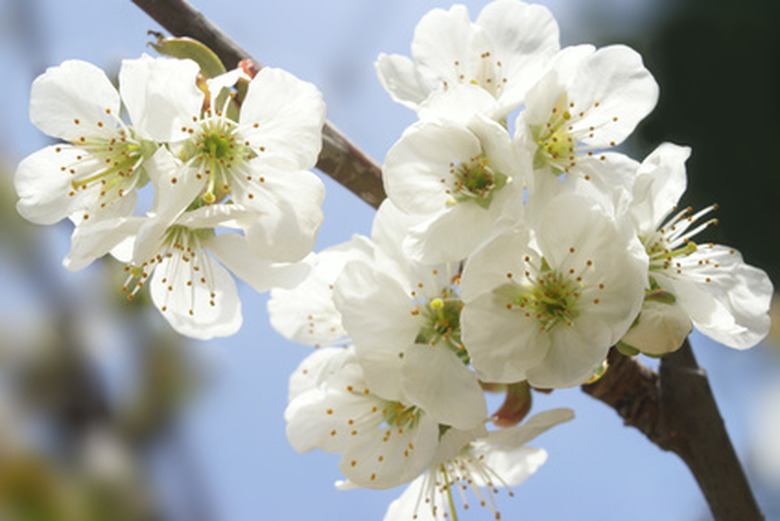Wild Cherry Trees In Ontario
Two types of wild cherry trees grow in Ontario, including the wild black cherry and the wild red cherry. Highly prized for its reddish-brown, close-grained wood, the wild black cherry tree offers juicy black fruits. Wild red cherry trees, also known as pin cherry, feature small, red cherries with a sour taste. Both trees work well in gardens, although knowing the differences between the two helps with planning.
Description
Found throughout Ontario, black cherry trees grow up to 100 feet in height although most black cherry trees tend to be scraggly. After leaves appear in the spring, fragrant clusters of small white flowers bloom. The green fruit eventually turns red, then black upon maturing. The sweet, tangy fruits taste best when cooked. Red cherry trees tend to be bush-sized plants, reaching 15 feet in height in ideal growing conditions. Clusters of white flowers appear at the same time as the leaves. The fruit turns red in August or September.
- Two types of wild cherry trees grow in Ontario, including the wild black cherry and the wild red cherry.
- Found throughout Ontario, black cherry trees grow up to 100 feet in height although most black cherry trees tend to be scraggly.
Habitat
Red cherry trees prefer to grow along forest clearings, streams and hillsides in well-drained soil. The trees also appear after forest fires in the sandy loams near the Great Lakes. Black cherry grows in almost any type of soil as long as it's well-drained, although the tree stays spindly-looking in overly wet or overly dry soils.
Planting and Care
For gardens, both types of trees may be planted from seeds or as transplants from containers. The trees require well-drained soil, preferably in full sun. Black cherry requires more space to grow than red cherry. The trees require regular watering until they are well-established.
- Red cherry trees prefer to grow along forest clearings, streams and hillsides in well-drained soil.
- The trees require well-drained soil, preferably in full sun.
Uses
Black cherries need to be cooked to make them edible with the cooked fruit making great jams, jellies and preserves. The fruit also works well as flavoring for brandy or whiskey. Stands of black cherry trees are also harvested for their beautiful hard, strong wood, which is comparable to mahogany. A resinous gum oozing from the wounds in black cherry trees makes good chewing gum and extracts for use in sedatives, laxatives and tonics. Red cherry tree fruits taste tart, working best in jellies and jams, although the sour mature fruits may be eaten right off the tree. Red cherries are also used in cough syrups.
Wildlife
Birds and small mammals flock to both types of cherry trees. While songbirds, quail and pheasants eat the cherries for the fruit, small mammals such as squirrels, mice and chipmunks nibble at the fruit to get to the seed. Deer eat the seedlings of new plants.
- Black cherries need to be cooked to make them edible with the cooked fruit making great jams, jellies and preserves.
- Red cherry tree fruits taste tart, working best in jellies and jams, although the sour mature fruits may be eaten right off the tree.
